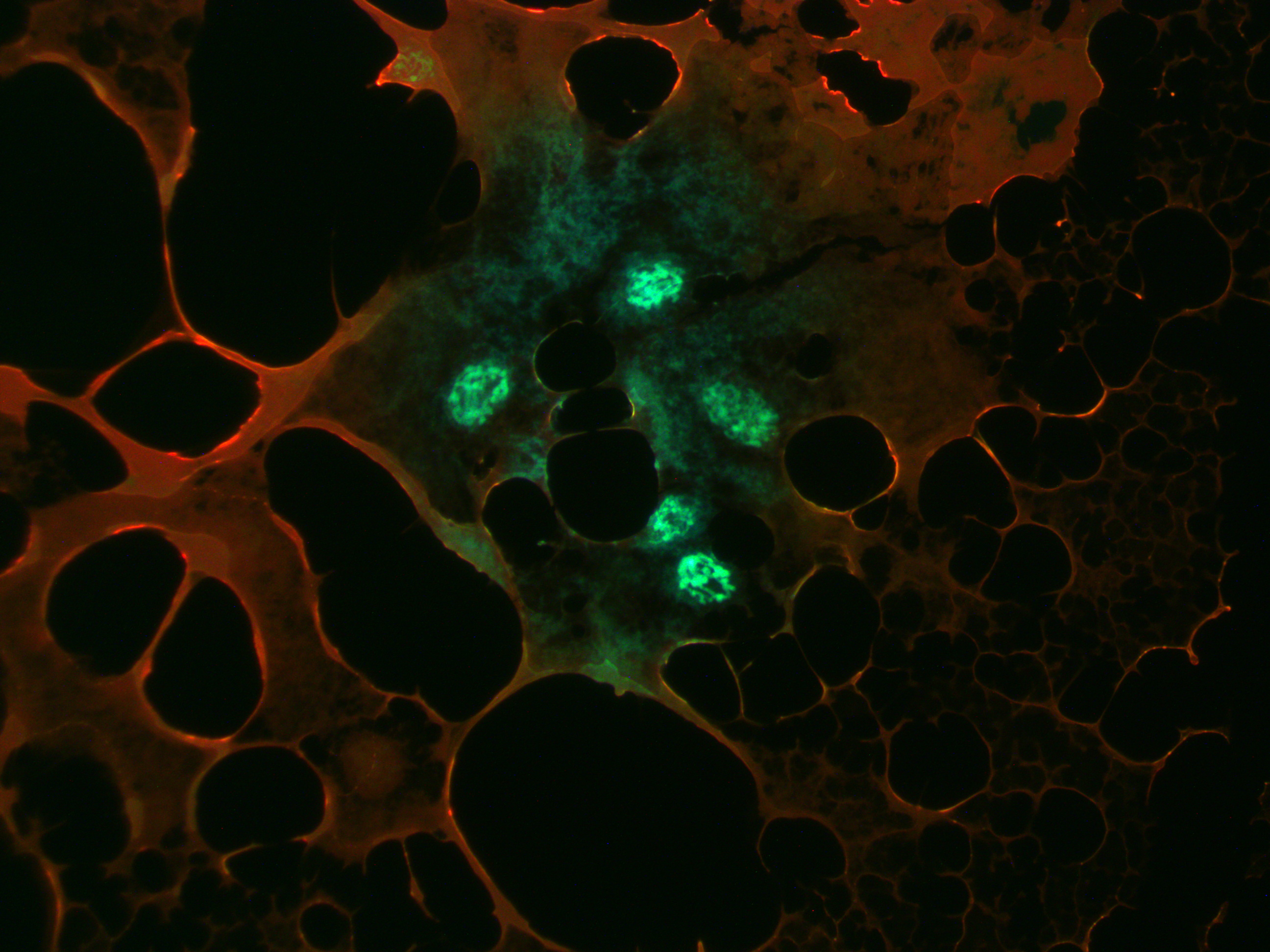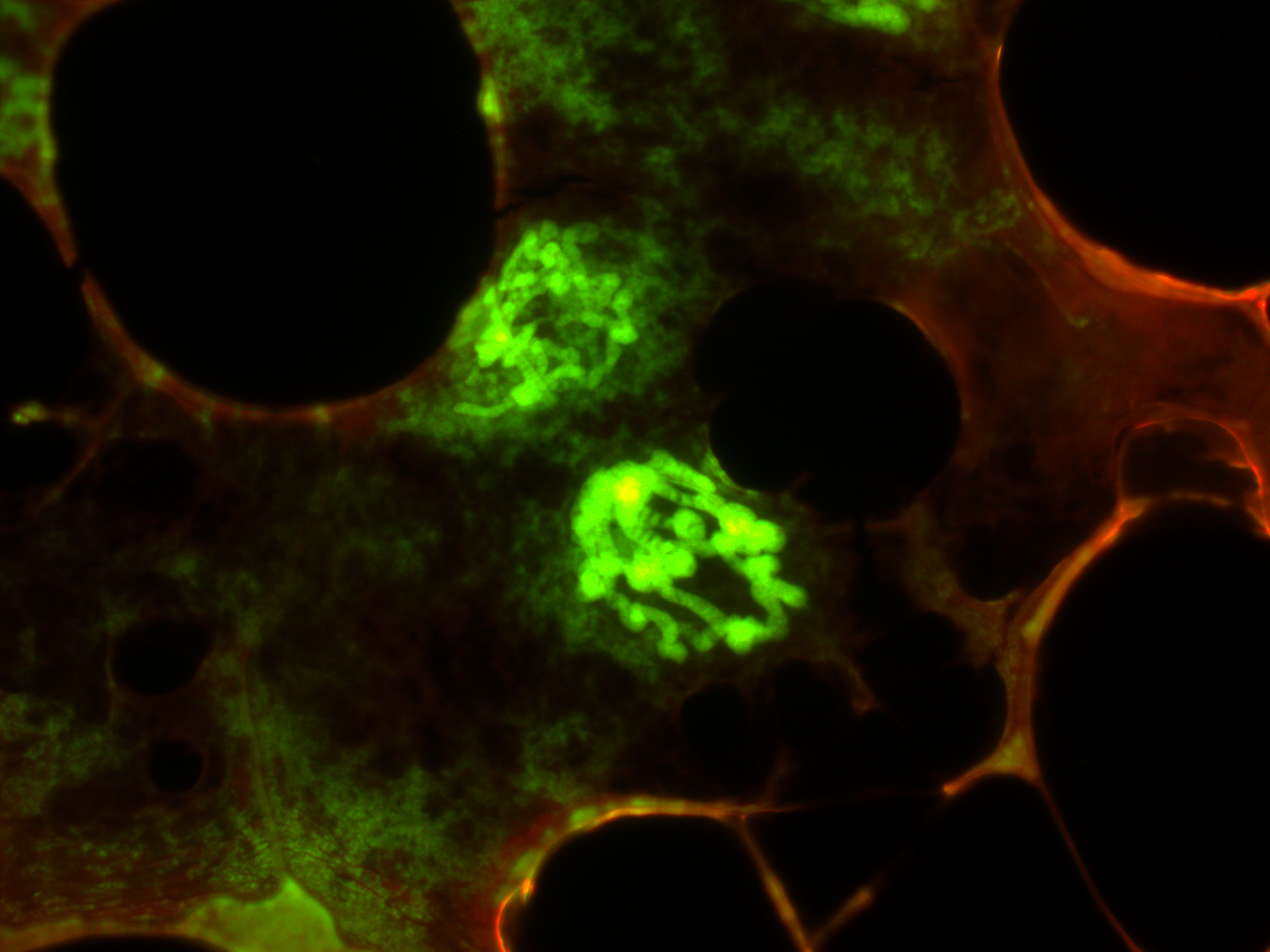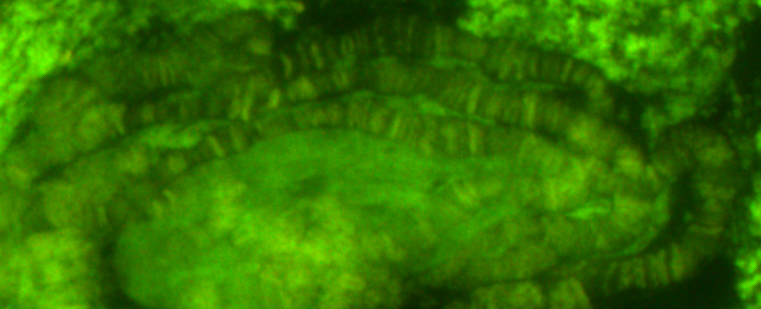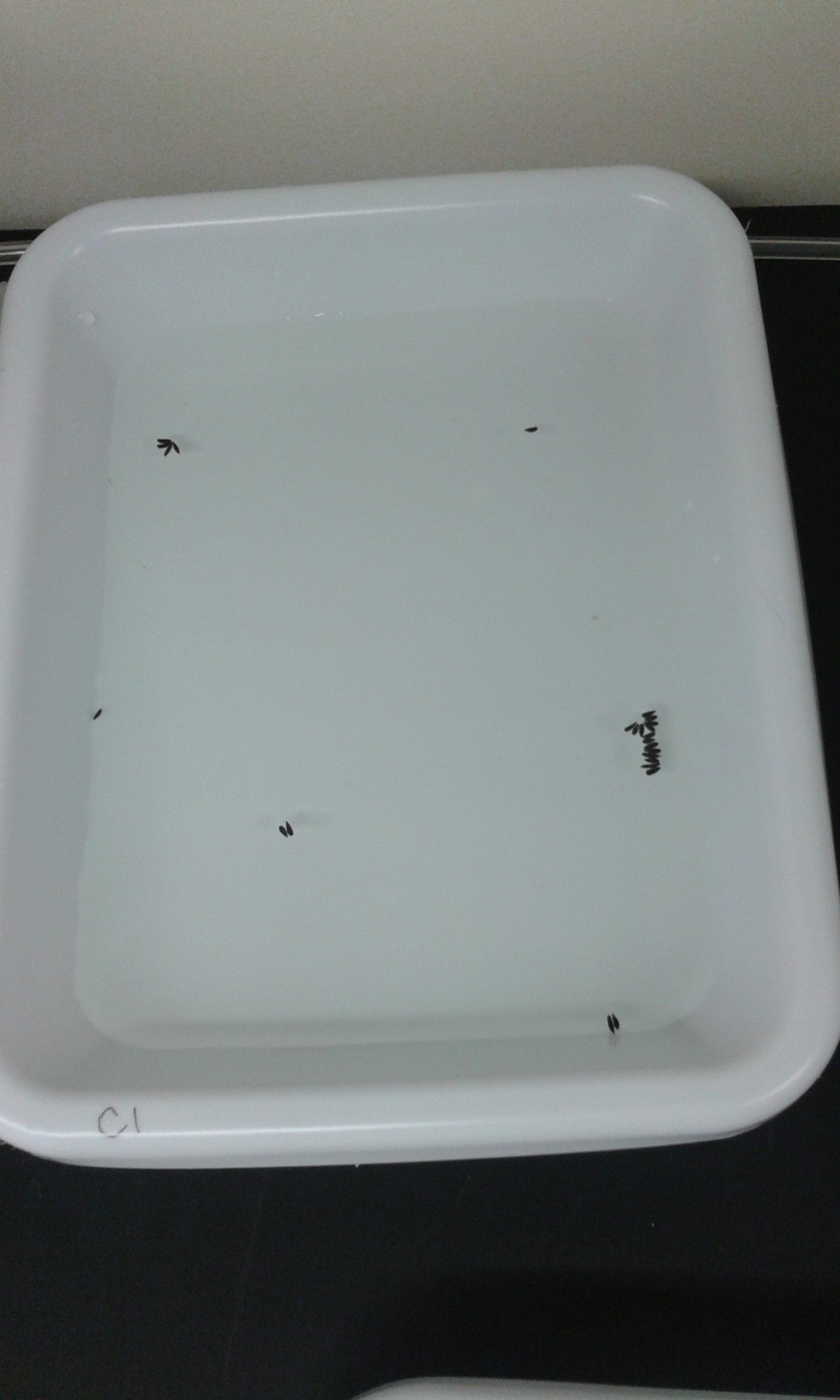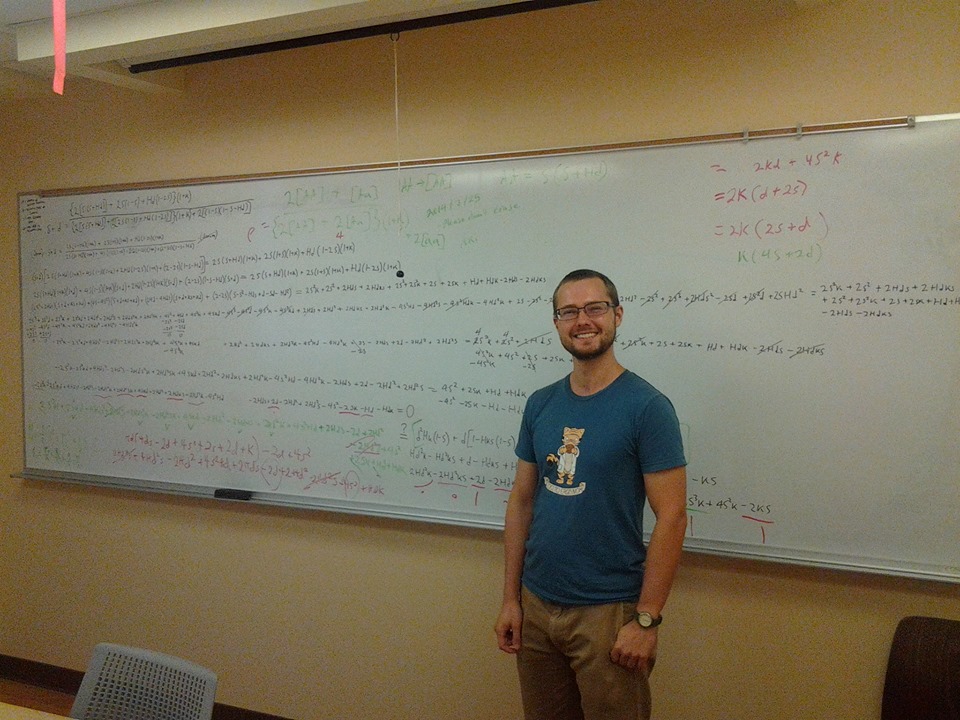Kenton's project has progressed quickly. We sorted out the issue with fluorescence (the light source was not aligned properly through the scope).
Here are some updated Drosophila chromosome images. They have a stain that dyes the DNA and is causing it to glow so you can see the chromosomes.
You can see the banding in the close up above.
Take a look at this!
and the detail below.
The spread isn't good but that's a clear banding pattern!
Now that this is working in Drosophila he has moved on to damselflies; his original interest. He is trying different tissues at different life stages to see which ones give the best chromosomes. The damsel fly chromosomes are smaller and there are many more of them so it is a bit challenging, but there are some more tricks up our sleeves to try out in order to increase resolution. Kenton already has some promising images but I do not want to post them here yet because they are new and potentially publishable results. However, expect an update on this topic in the future.
